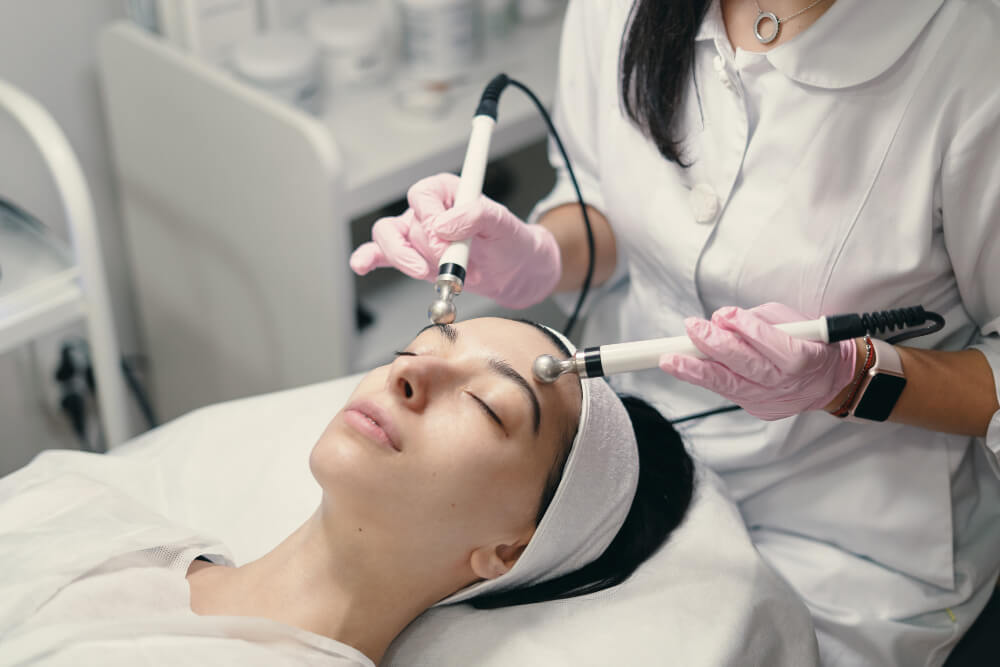Introduction
In the ever-evolving world of skincare, chemical peel facial treatments stand out as one of the most effective ways to rejuvenate and transform your complexion. Whether you’re battling acne scars, sun damage, fine lines, or just want a radiant glow, a chemical peel could be your skin’s best friend.
But what exactly is a chemical peel? How does it work? And most importantly—is it right for you?
In this comprehensive guide, we’ll dive deep into everything you need to know about chemical peels, from the science behind them to the different types available, aftercare tips, and expert recommendations.
What Is a Chemical Peel?
A chemical peel is a professional skincare treatment that uses acidic solutions to exfoliate the skin, removing dead cells and stimulating collagen production. The result? Smoother, brighter, and younger-looking skin.
Chemical peels vary in strength—from light (superficial) peels that gently refresh the skin to deep peels that dramatically reduce wrinkles and scars.
How Does a Chemical Peel Work?
- Exfoliation: The chemical solution dissolves the bonds between dead skin cells, allowing them to shed.
- Stimulation: The process triggers collagen and elastin production, improving skin texture and firmness.
- Renewal: Fresh, healthy skin emerges, reducing imperfections like hyperpigmentation and acne scars.
Types of Chemical Peels: Which One Is Right for You?
Not all chemical peels are created equal. The right peel for you depends on your skin type, concerns, and desired results.
1. Superficial (Light) Peels
-
Best for: Dull skin, mild acne, slight discoloration
-
Acids used: Glycolic acid, lactic acid, salicylic acid
-
Downtime: Little to none (peeling lasts 1-3 days)
-
Frequency: Every 2-4 weeks for maintenance
2. Medium Peels
-
Best for: Moderate wrinkles, acne scars, sun damage
-
Acids used: Trichloroacetic acid (TCA), Jessner’s solution
-
Downtime: 5-7 days (redness, peeling, and flaking)
-
Frequency: Every 6-12 months
3. Deep Peels
-
Best for: Severe wrinkles, deep scars, precancerous growths
-
Acids used: Phenol
-
Downtime: 2+ weeks (significant peeling and redness)
-
Frequency: Once in a lifetime (due to intensity)
⚠ Note: Deep peels should only be performed by a board-certified dermatologist due to their potency.
Benefits of Chemical Peels
Why are chemical peels so popular? Here’s what they can do for your skin:
✅ Reduce Fine Lines & Wrinkles – Stimulates collagen for firmer skin.
✅ Fade Hyperpigmentation & Sun Damage – Evens out skin tone.
✅ Treat Acne & Minimize Scars – Unclogs pores and reduces breakouts.
✅ Improve Skin Texture – Smoother, softer, and more radiant skin.
✅ Boost Product Absorption – Removes dead skin, allowing serums to penetrate better.
What to Expect During & After a Chemical Peel
Before the Treatment
-
Avoid sun exposure, retinoids, and waxing for at least a week.
-
Your dermatologist will assess your skin and recommend the best peel.
During the Treatment
- Cleansing – Skin is prepped to remove oils.
- Application – The chemical solution is brushed on (you may feel tingling).
- Neutralization – The peel is deactivated after the right exposure time.
Aftercare & Recovery
-
Day 1-3: Redness, tightness, and slight peeling (superficial peels).
-
Day 4-7: Flaking and peeling (medium peels).
-
Week 2+: Full healing (deep peels).
Pro Tips:
-
Use gentle cleansers and fragrance-free moisturizers.
-
Avoid sun exposure and wear SPF 50+ daily.
-
Don’t pick at peeling skin—let it shed naturally!
Who Should Avoid Chemical Peels?
While chemical peels are safe for most, they’re not recommended if you:
❌ Have active cold sores or infections
❌ Are pregnant or breastfeeding
❌ Use Accutane (wait at least 6 months after stopping)
❌ Have extremely sensitive or eczema-prone skin
Always consult a dermatologist before getting a peel!
Chemical Peel Myths Debunked
❌ Myth: “Chemical peels burn your skin.”
✅ Truth: When done correctly, they’re safe and controlled.
❌ Myth: “Only older people need peels.”
✅ Truth: Peels benefit all ages—from acne-prone teens to mature skin.
❌ Myth: “You can’t go outside after a peel.”
✅ Truth: You can, but sun protection is critical.
Final Thoughts: Is a Chemical Peel Worth It?
If you’re looking for dramatic yet controlled skin renewal, a chemical peel could be a game-changer. Whether you opt for a light refresh or a deep resurfacing, the key is choosing the right peel for your skin type and following proper aftercare.
Ready to take the plunge? Book a consultation with a licensed skincare professional and unlock your skin’s true potential!

